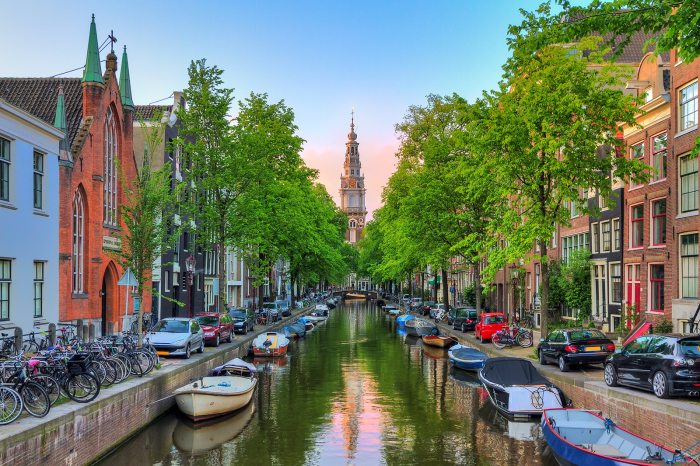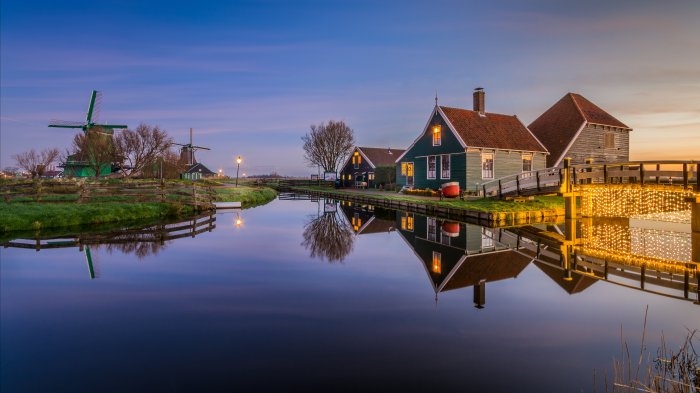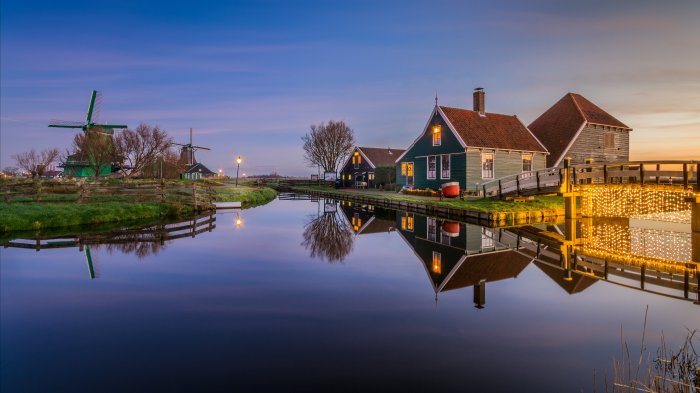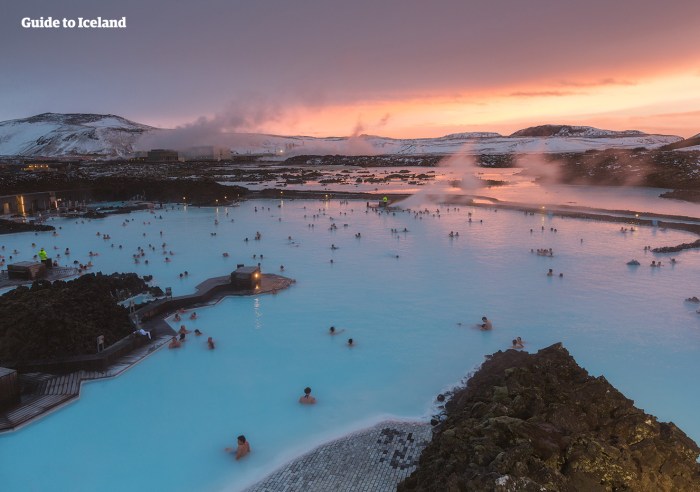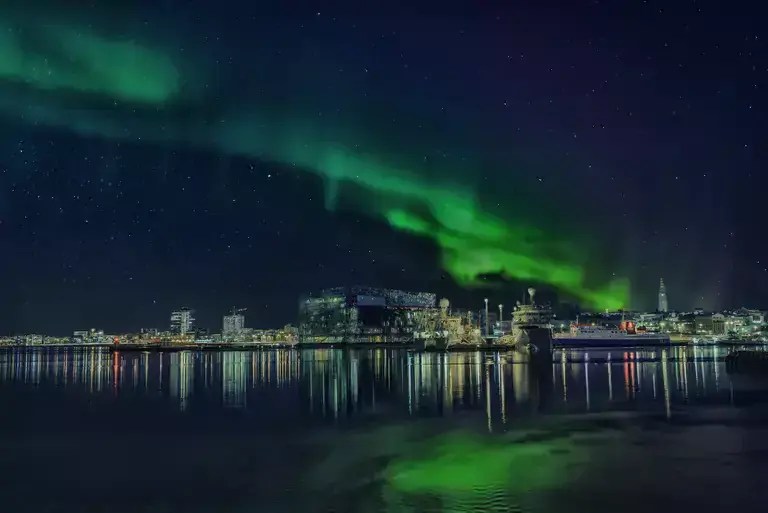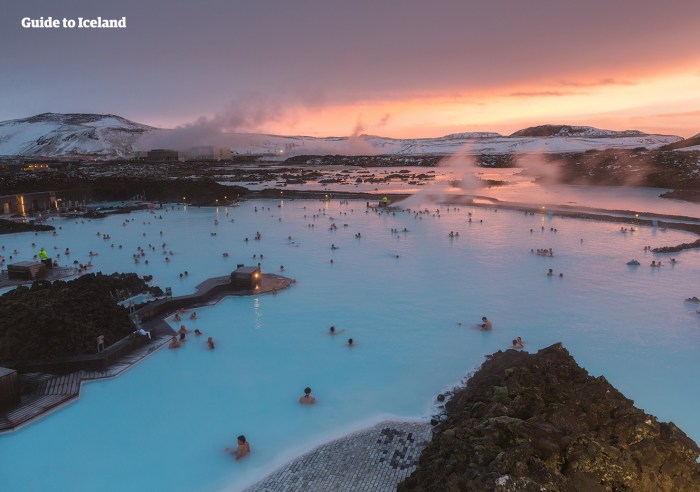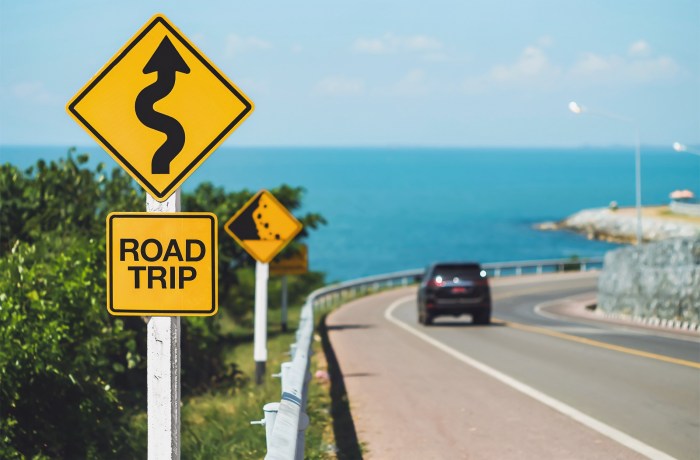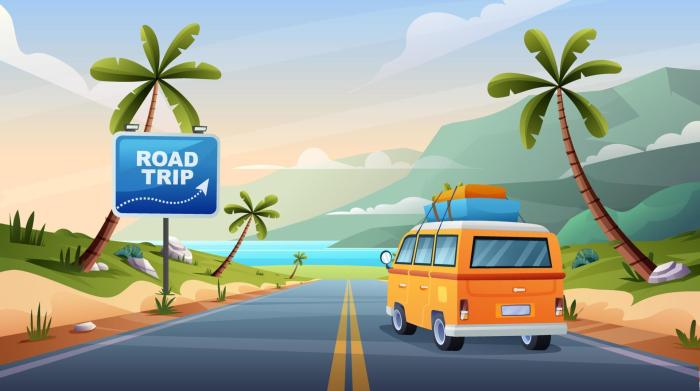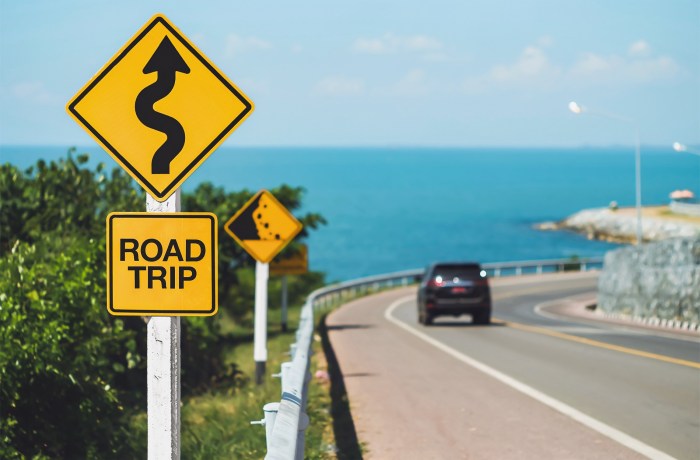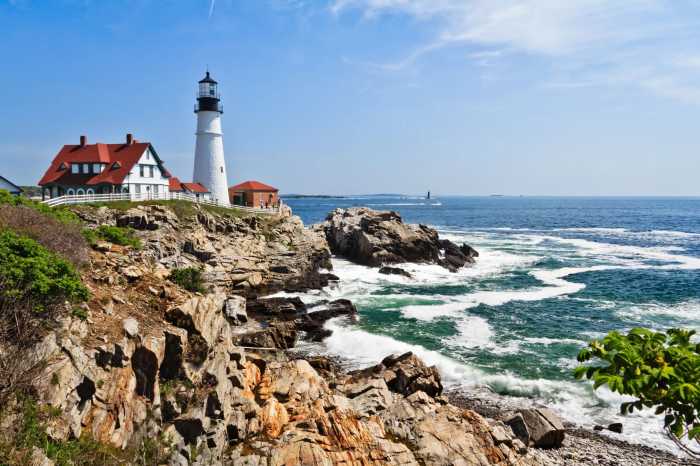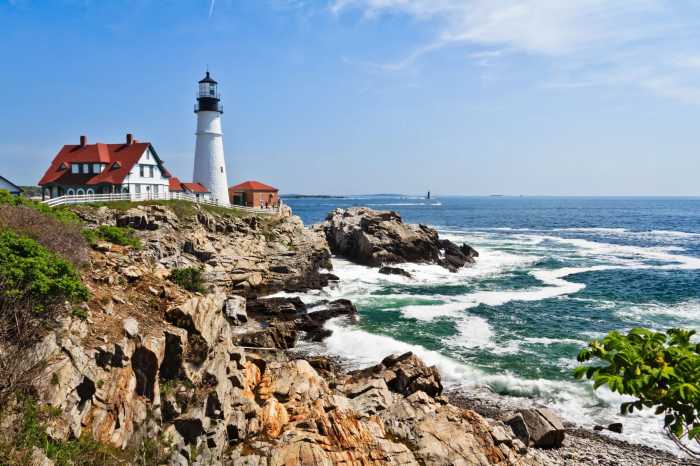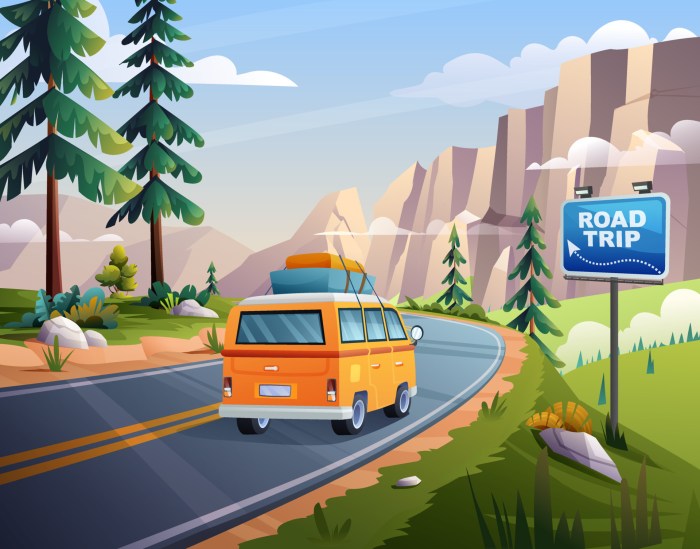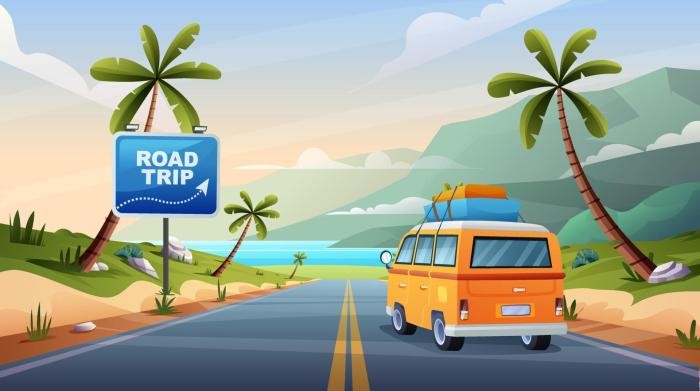Top things to do in Lyon unveils a captivating journey through this vibrant French city. From iconic landmarks to culinary delights, cultural experiences, and outdoor adventures, Lyon offers something for every traveler. This guide explores the must-sees, tastes, and experiences that make Lyon a truly unforgettable destination.
This comprehensive guide will walk you through the city’s highlights, from its rich history to its modern appeal. Discover the best ways to experience Lyon’s vibrant culture, delicious food, and stunning architecture. Get ready for an unforgettable adventure!
Introduction to Lyon
Lyon, a vibrant city nestled in southeastern France, pulsates with a unique blend of history, culture, and modern appeal. Known for its rich culinary heritage, stunning architecture, and lively atmosphere, Lyon offers a captivating experience for tourists seeking a taste of French charm. From the ancient Roman ruins to the contemporary art scene, the city provides a fascinating journey through time.Lyon’s strategic location on the Rhône River has played a pivotal role in its development.
Its historical significance, encompassing centuries of trade, artistry, and innovation, has shaped its character and continues to influence its appeal. The city’s enduring allure for visitors today stems from its captivating blend of historical sites, engaging activities, and convenient accessibility.
Lyon’s Historical Significance
Lyon’s history stretches back to Roman times. Founded as Lugdunum, it served as a crucial hub for trade and administration within the Roman Empire. The city’s legacy is evident in its well-preserved Roman ruins, which provide a tangible connection to its ancient past. Over the centuries, Lyon evolved into a significant center for commerce and industry, playing a pivotal role in France’s economic development.
This historical depth adds a layer of intrigue and fascination to the modern city. The historical influence is palpable in the city’s architecture, from the ancient amphitheater to the medieval streets.
Lyon’s Culinary Scene
Lyon’s culinary reputation is legendary. The city is renowned for its exceptional restaurants and bistros, showcasing the best of French cuisine. The region’s rich agricultural heritage provides an abundance of fresh ingredients, resulting in an impressive array of dishes, often incorporating traditional techniques and innovative culinary approaches. A visit to Lyon is incomplete without experiencing the city’s gastronomy.
From regional specialties to Michelin-starred restaurants, Lyon’s culinary offerings cater to diverse palates and preferences. This culinary heritage, a testament to Lyon’s rich history, is a significant attraction for food enthusiasts.
Lyon’s Attractions for Tourists
Lyon’s appeal to tourists lies in its blend of historical charm and modern amenities. The city offers a wealth of attractions, catering to diverse interests, including art lovers, history buffs, and foodies. The accessibility of the city, with its efficient public transportation system and well-maintained infrastructure, allows visitors to explore Lyon comfortably and efficiently. The city’s welcoming atmosphere further enhances the visitor experience.
A multitude of shops, cafes, and restaurants contribute to the city’s vibrant ambiance.
A Welcoming City for Visitors
Lyon is a welcoming and accessible city, designed for tourists. Its well-maintained public transportation system facilitates easy movement around the city, allowing visitors to reach attractions with ease. This accessibility is a significant factor in the city’s popularity among tourists. The city’s numerous hotels, cafes, and restaurants contribute to a seamless visitor experience. Moreover, the city’s vibrant ambiance and welcoming locals make it an ideal destination for a memorable trip.
Must-See Landmarks
Lyon, a city steeped in history and brimming with architectural marvels, boasts a captivating array of landmarks that whisper tales of its past. From ancient Roman ruins to Renaissance palaces, each structure tells a unique story, revealing the city’s evolution and its enduring spirit. Exploring these landmarks offers a profound insight into Lyon’s cultural heritage and its place in the broader tapestry of European history.These landmarks, meticulously preserved and often adorned with intricate details, showcase the artistic and engineering prowess of different eras.
Each holds a unique historical significance, reflecting the city’s identity and its role in shaping the region’s trajectory. Understanding the architectural styles and design features provides a deeper appreciation for the craftsmanship and the cultural exchange that occurred throughout Lyon’s history.
Iconic Landmarks of Lyon
Lyon’s rich history is vividly reflected in its iconic landmarks, which range from impressive religious structures to significant civic monuments. Each landmark holds a unique place in the city’s narrative, showcasing the city’s architectural diversity and cultural richness. These structures serve as a testament to the city’s remarkable past, embodying the city’s character and attracting visitors from across the globe.
Top 5 Iconic Landmarks
Lyon’s skyline is punctuated by a constellation of historical gems, each with its own unique story. These five landmarks offer a glimpse into the city’s past and provide a captivating experience for visitors. They represent a diverse range of architectural styles and historical periods, from Roman antiquity to the Renaissance.
| Landmark Name |
Brief Description |
Historical Significance |
Suggested Photo |
| Fourvière Hill Basilica |
A stunning basilica perched atop Fourvière Hill, offering panoramic views of the city. |
Built in the 19th century, the basilica replaced an earlier Roman temple and a medieval church. It stands as a prominent symbol of Lyon’s religious devotion. |
A photo of the basilica with the city of Lyon spread out below. The image should highlight the intricate architectural details of the basilica’s facade and its commanding position. |
| Hôtel-Dieu |
A former hospital complex, now a museum and cultural center, showcasing a fascinating history of medicine and care. |
Dating back to the 11th century, Hôtel-Dieu evolved from a simple hospital to a complex institution, reflecting the development of healthcare and social services over centuries. It embodies the evolution of civic responsibility in caring for the sick. |
A photo showing the architectural details of the Hôtel-Dieu complex, highlighting its historical layers and its role in Lyon’s urban development. |
| Musée des Beaux-Arts |
A museum housing an extensive collection of paintings, sculptures, and decorative arts, showcasing the city’s artistic heritage. |
This museum, housed in a grand building, reflects Lyon’s rich artistic traditions. It has played a significant role in preserving and showcasing the city’s artistic heritage. |
A photo of the museum’s exterior, showcasing its classical architecture and grandeur, and a close-up detail of a noteworthy artwork within the museum. |
| Saint-Jean-Baptiste Cathedral |
A prominent cathedral in the heart of the city, reflecting Lyon’s religious history and architectural styles. |
The cathedral’s architectural features showcase a blend of Romanesque and Gothic styles, reflecting the historical evolution of religious architecture. It represents the enduring role of religion in shaping Lyon’s cultural landscape. |
A photo of the cathedral’s facade, highlighting its intricate details and the grandeur of its design. |
| Old Town (Vieux Lyon) |
A picturesque collection of narrow streets, historical buildings, and shops, offering a glimpse into Lyon’s medieval past. |
The preserved medieval architecture of Vieux Lyon provides a fascinating insight into the city’s medieval period. Its narrow streets and preserved buildings tell a story of the city’s vibrant past. |
A photo capturing the charming atmosphere of Vieux Lyon, with its narrow streets, colorful buildings, and shops. It should highlight the historical details and architectural characteristics of the area. |
Culinary Delights
Lyon, a city steeped in history and tradition, boasts a vibrant culinary scene that’s as captivating as its architecture. The city’s reputation for exceptional food is deeply rooted in its agricultural heritage, producing fresh, high-quality ingredients that form the backbone of its cuisine. This culinary prowess extends beyond simple meals; it’s a celebration of the art of cooking, reflecting the city’s rich history and cultural identity.Lyon’s culinary identity is intertwined with its geographical location and its agricultural bounty.
The surrounding countryside provides an abundance of fresh produce, meats, and cheeses, which are central to the city’s gastronomic offerings. This focus on local, seasonal ingredients is a hallmark of Lyon’s culinary tradition, ensuring dishes are not only delicious but also sustainable and deeply connected to the region’s identity.
Traditional Dishes and Ingredients
Lyon’s cuisine is characterized by its use of fresh, seasonal produce and its emphasis on hearty, satisfying dishes. A wide array of ingredients, from locally sourced fruits and vegetables to exquisite cheeses and meats, are carefully selected and prepared to create culinary masterpieces. This emphasis on quality ingredients is a defining feature of Lyon’s culinary scene, differentiating it from other French culinary traditions.
Must-Try Local Specialties
Lyon’s culinary heritage is rich with diverse specialties, each offering a unique taste of the region. Here are five must-try local dishes, each showcasing the region’s commitment to quality ingredients and masterful preparation:
Cultural Significance of Food in Lyon
Food plays a central role in Lyonnaise culture. It’s not just about sustenance; it’s about community, tradition, and shared experiences. Family gatherings, business lunches, and casual meals are all opportunities to savor the city’s culinary treasures. Meals are often lengthy affairs, allowing for conversation, laughter, and the appreciation of good food. The image evokes a bustling, lively atmosphere where people are sharing food and enjoying each other’s company.
Lyon boasts stunning architecture and vibrant markets, making it a fantastic city to explore. If you’re looking for a unique way to experience the city, consider checking out the latest Holland America standby travel expansion opportunities. These deals could offer a great way to see Lyon at a reduced cost, allowing you to fit more of the top things to do into your trip, like visiting the Fourvière Hill or the impressive Basilica.
Comparison with Other French Culinary Traditions
While French cuisine is renowned globally, Lyon’s approach differs in its emphasis on local ingredients and hearty, rustic dishes. Other regions, like the Basque Country, may focus on seafood or lighter fare. Paris, for example, is often associated with a more refined and elegant culinary experience. However, Lyon’s focus on fresh, local produce and its commitment to traditional recipes gives its cuisine a unique and authentic character.
Lyonnaise Specialties
| Dish Name |
Ingredients |
Preparation Method |
Image Description |
| Bouchon Lyonnais |
Beef, vegetables, sauces, crusty bread |
Stewed or braised in flavorful sauces, often served with sides and crusty bread |
A rustic-style dish with a hearty portion of beef and vegetables, with a rich, savory sauce, and a crusty bread basket. |
| Potée Lyonnaise |
Seasonal vegetables, broth |
Simmered in a flavorful broth, often served with crusty bread |
A comforting stew with a blend of vegetables, including potatoes, carrots, and turnips, simmered in a light-colored broth, and served with crusty bread. |
| Andouillette |
Pork and beef offal |
Grilled or roasted, often served with crusty bread |
A grilled sausage with a slightly darker tone, with a noticeable texture and a slight smoky aroma. |
| Gratin Dauphinois |
Potatoes, milk, cream |
Layered potatoes in a baking dish, topped with a creamy sauce and baked until golden brown |
A golden-brown, crispy-textured gratin with a creamy, slightly bubbly sauce, made with thinly sliced potatoes, with a rich, creamy texture. |
Cultural Experiences
Lyon, a city steeped in history and tradition, offers a rich tapestry of cultural experiences beyond its culinary scene. From its impressive museums to its vibrant theater performances, Lyon provides a unique opportunity to delve into the city’s artistic soul and appreciate its contributions to the arts. These experiences offer a glimpse into the city’s heritage and provide a meaningful addition to any visitor’s itinerary.Lyon’s artistic heritage is deeply rooted in its past, manifesting in various forms of expression.
The city’s commitment to nurturing artistic talent and providing platforms for its expression is evident in its numerous museums, galleries, and theaters. These venues not only showcase local talent but also provide a platform for international artists and exhibitions, making Lyon a hub of cultural exchange. This blend of local and global influences contributes to a vibrant and engaging cultural experience for visitors.
Museums and Galleries
Lyon boasts a collection of museums and galleries that showcase a diverse range of artistic mediums and historical periods. These institutions play a vital role in preserving and promoting artistic heritage. The city’s commitment to preserving its past is reflected in the dedicated spaces provided for these institutions.
- Musée des Beaux-Arts de Lyon: This museum houses a substantial collection of paintings, sculptures, and decorative arts, spanning centuries. The collection features works from renowned European masters, alongside impressive examples of local and regional artists. The museum’s impressive collection provides a comprehensive overview of artistic development and historical context.
- Musée Gadagne: Specializing in the decorative arts and particularly showcasing 18th- and 19th-century French furniture and porcelain, this museum offers a unique perspective on the evolution of design and craftsmanship. The exquisite collection allows visitors to appreciate the artistry and attention to detail of past eras.
- Musée d’Art Contemporain de Lyon: A dedicated space for modern and contemporary art, this museum presents a dynamic collection reflecting the latest trends and innovations in artistic expression. This institution fosters an appreciation for cutting-edge creativity and the evolution of artistic styles.
- Musée des Tissus: Focusing on textiles and fashion, this museum offers a fascinating insight into the history of clothing and textile production. The museum’s exhibits trace the evolution of textiles, from ancient techniques to modern innovations, highlighting the cultural significance of fabric and fashion.
- Musée des Confluences: This science and history museum explores the intersection of science, technology, and human history. It features interactive exhibits, allowing visitors to engage with scientific concepts and historical narratives in an engaging manner. This institution provides a comprehensive look at the convergence of scientific discoveries and historical events.
Theatrical Performances
Lyon’s vibrant theater scene provides a platform for both established and emerging artists. The city’s commitment to the performing arts is evident in the quality and variety of theatrical productions.
- Opéra de Lyon: A renowned opera house, the Opéra de Lyon hosts performances of classic and contemporary operas, showcasing the city’s dedication to high-caliber musical theater. The grandeur of the venue and the quality of the performances provide a truly immersive theatrical experience.
- Théâtre des Célestins: A historic theater, the Théâtre des Célestins presents a diverse range of theatrical performances, from plays and musicals to dance performances. The theater’s rich history and commitment to diverse programming make it a crucial part of Lyon’s cultural landscape.
Cultural Experiences Overview
| Cultural experience |
Description |
Key Highlights |
Recommended Duration |
| Musée des Beaux-Arts de Lyon |
Houses a substantial collection of paintings, sculptures, and decorative arts. |
European masters, local and regional artists. |
2-3 hours |
| Musée Gadagne |
Specializes in 18th- and 19th-century French decorative arts. |
Furniture, porcelain, design, craftsmanship. |
1-2 hours |
| Musée d’Art Contemporain de Lyon |
Presents modern and contemporary art. |
Dynamic collection, latest trends, innovations. |
1-2 hours |
| Musée des Tissus |
Focuses on textiles and fashion. |
History of clothing, textile production, evolution of techniques. |
1-2 hours |
| Musée des Confluences |
Science and history museum with interactive exhibits. |
Science, technology, human history, engaging exhibits. |
2-4 hours |
| Opéra de Lyon |
Renowned opera house hosting classical and contemporary operas. |
High-caliber musical theater, immersive experience. |
2-3 hours (including pre-show) |
| Théâtre des Célestins |
Historic theater presenting diverse theatrical performances. |
Plays, musicals, dance, diverse programming. |
1.5-3 hours (depending on the performance) |
Outdoor Activities and Parks
Lyon, a city known for its rich culinary scene and historical landmarks, also boasts a beautiful network of parks and green spaces. These areas offer respite from the urban bustle, providing opportunities for relaxation, recreation, and connection with nature. Exploring these spaces reveals a different facet of the city, one that emphasizes the importance of nature in an urban environment.Lyon’s parks are more than just places to stroll; they are vibrant hubs of activity, hosting events, and providing a tranquil escape from the city’s energy.
They offer a chance to experience the city’s green heart, fostering a sense of community and well-being.
Popular Parks and Outdoor Spaces
Lyon offers a diverse range of parks, each with its unique character and attractions. These green spaces cater to various interests and provide a welcoming atmosphere for residents and visitors alike. Their presence is vital for urban health and well-being, providing a crucial link to nature within the city’s boundaries.
Importance of Green Spaces in Urban Environments
Green spaces play a crucial role in the well-being of urban dwellers. They offer more than just aesthetic beauty; they are essential for physical and mental health. Studies consistently demonstrate that access to green spaces can reduce stress, improve mental clarity, and promote physical activity. These spaces provide a vital connection to nature in the midst of urban life, enhancing the quality of life for everyone.
Best Times to Visit for Outdoor Activities
The best time to visit Lyon’s parks for outdoor activities depends on the weather conditions and your personal preferences. Spring and autumn typically offer pleasant temperatures and fewer crowds, making them ideal for leisurely walks and picnics. Summer, while hot, is a popular time for outdoor activities and enjoying the parks. In winter, Lyon’s parks may be less crowded but also have cooler temperatures.
Knowing the expected weather conditions and adjusting your plans accordingly can ensure a comfortable and enjoyable experience.
Accessibility for People with Disabilities
Lyon’s parks and outdoor spaces strive to be accessible to people with disabilities. Many parks have well-maintained pathways, ramps, and accessible restrooms. Information about accessibility is often available on the park’s official website or by contacting the relevant city authority. This commitment to inclusivity ensures that everyone can enjoy the beauty and benefits of these green spaces.
Park Details
| Park Name |
Description |
Amenities |
Best Time to Visit |
| Parc de la Tête d’Or |
Expansive park with zoo, botanical garden, and lake. |
Picnic areas, walking paths, playgrounds, restrooms. |
Spring and Autumn (pleasant temperatures) |
| Parc de Gerland |
Park with sports facilities and panoramic views. |
Sports fields, playgrounds, pond, restrooms. |
Spring, Autumn (pleasant temperatures) and Summer (hot but sunny) |
| Parc de la Croix-Rousse |
Charming park in the city center with historical elements. |
Walking paths, benches, historical features, restrooms. |
Spring and Autumn (pleasant temperatures) |
Shopping and Retail
Lyon, a city steeped in history and culinary tradition, also boasts a vibrant retail scene. From charming boutiques to bustling markets, the shopping experience in Lyon is as diverse as the city itself. Discover unique finds, local crafts, and delicious treats amidst the city’s architectural beauty. The city’s distinct neighborhoods offer varying shopping experiences, catering to diverse tastes and budgets.Lyon’s shopping landscape reflects its character.
Whether you’re seeking designer pieces, artisanal goods, or gourmet food, you’ll find it within the city’s many retail spaces. The local boutiques and markets offer a taste of Lyon’s authentic spirit, providing a tangible connection to the city’s cultural heritage.
Local Boutiques and Markets
Lyon’s charm lies in its numerous independent boutiques. These establishments, often family-owned, showcase unique items and craftsmanship, setting them apart from large retail chains. They provide a personal touch, offering tailored customer service and a deeper understanding of the products they sell. Many boutiques are nestled within charming streets, often featuring a mix of clothing, accessories, and home décor items.
Visiting these boutiques offers a true glimpse into the heart of Lyon’s creative spirit. Markets, a staple in French culture, also play a significant role. Lyon’s markets offer a dynamic blend of fresh produce, artisanal goods, and local delicacies. The vibrant atmosphere and the opportunity to interact with local artisans create a unique shopping experience.
Neighborhood Shopping Experiences
Lyon’s diverse neighborhoods each offer a distinct shopping experience. The trendy boutiques and high-end stores of the Presqu’île area cater to a sophisticated clientele. The Croix-Rousse district, known for its textile heritage, is home to numerous shops specializing in fabrics, clothing, and accessories. The vibrant Cours Vitton and the area around it offer a wide array of stores, ranging from department stores to smaller boutiques, providing a diverse shopping experience.
Each neighborhood’s unique character and atmosphere contribute to the city’s rich tapestry of shopping opportunities.
Souvenirs
Lyon offers a wide range of souvenirs for visitors to take home as mementos of their trip. From handcrafted jewelry and ceramics to locally produced wines and gourmet food items, there’s a souvenir to suit every taste and budget. Many of these items are created by local artisans, making them not only beautiful but also authentic representations of Lyon’s culture.
Traditional Lyonnaise products, such as the famous Lyonnaise sausages or local cheeses, make wonderful gifts and souvenirs, reflecting the city’s culinary heritage. You can find these souvenirs in the city’s numerous markets and boutiques, providing a unique opportunity to support local artisans and take a piece of Lyon home.
Shopping Recommendations
To make the most of your shopping experience in Lyon, consider these recommendations. Visit the markets, such as the Halles Paul Bocuse, early in the morning to take advantage of the freshest produce and the most diverse selection. Explore the charming streets and alleys, where you’ll often find hidden gems and unique boutiques. Don’t hesitate to ask local shopkeepers for recommendations; they can often point you towards lesser-known treasures.
For a comprehensive shopping experience, consider visiting the department stores for a variety of goods.
Shopping Areas in Lyon
| Shopping Area |
Description |
Types of Shops |
Opening Hours |
| Presqu’île |
Central area, upscale boutiques and department stores. |
Fashion, luxury goods, department stores. |
Typically 9:00 AM – 7:00 PM, with some stores opening later or staying open on weekends. |
| Croix-Rousse |
Historic district, textiles, clothing, accessories. |
Textiles, clothing, accessories, local crafts. |
Similar to Presqu’île, with some variation depending on the specific shop. |
| Cours Vitton |
Modern shopping area, mix of shops and restaurants. |
Variety of shops, including fashion, electronics, books, and food. |
Generally similar to Presqu’île and Croix-Rousse, with some evening hours on weekends. |
| Les Halles Paul Bocuse |
Covered market, fresh produce, local food, and gourmet items. |
Food stalls, local produce, prepared food. |
Usually open early in the morning until late afternoon, depending on the day of the week. |
Nightlife and Entertainment: Top Things To Do In Lyon
Lyon’s vibrant nightlife scene offers a diverse range of experiences, catering to all tastes. From intimate bars serving classic cocktails to energetic clubs pumping out the latest beats, and live music venues showcasing local and international talent, there’s something for everyone to enjoy. The city’s historical charm blends seamlessly with a modern, lively atmosphere, creating a truly unforgettable experience for evening adventures.Lyon’s nightlife is characterized by its blend of traditional and contemporary offerings.
This fusion of styles allows visitors to discover hidden gems alongside renowned venues, ensuring a unique and immersive experience for every night out. The city’s passionate inhabitants and enthusiastic visitors create an electric atmosphere that pulses through the streets, bars, and clubs, transforming Lyon into a dynamic hub for entertainment.
Bars and Pubs
Lyon boasts a plethora of bars and pubs, each with its own unique character. From cozy, intimate settings perfect for a quiet drink and conversation to lively pubs buzzing with locals and tourists, the city’s bar scene offers a variety of atmospheres. Many bars feature live music, often showcasing local musicians, providing an authentic taste of the city’s musical culture.
This is a great opportunity to experience the local scene and connect with the people of Lyon.
Clubs and Dance Venues, Top things to do in lyon
Lyon’s club scene is equally diverse, catering to a range of musical preferences. From trendy dance clubs playing electronic music to more intimate venues showcasing DJ sets, the city provides options for every music enthusiast. These venues often feature themed nights, further enhancing the experience for visitors seeking something different each time they step out.
Live Music Venues
Lyon’s live music scene thrives, offering a platform for both established artists and emerging talent. The city’s dedication to showcasing local and international music performances creates a dynamic and exciting atmosphere for music lovers. Expect to discover diverse genres, from jazz and blues to rock and pop, played in intimate venues or larger concert halls. Many venues host regular performances, ensuring a constant stream of entertainment throughout the year.
Entertainment Recommendations
Lyon’s nightlife and entertainment scene caters to diverse preferences. Whether you’re seeking a relaxed evening at a traditional bistro, an energetic dance experience in a pulsating club, or a captivating performance at a live music venue, the city offers something for everyone.
| Entertainment Type |
Location |
Atmosphere |
Dress Code |
| Traditional Bistro |
Old Town |
Intimate, cozy, relaxed |
Casual |
| Dance Club |
Presqu’île |
Energetic, vibrant, dancing |
Smart casual |
| Live Music Venue |
Croix-Rousse |
Invigorating, dynamic, listening |
Casual |
| Cocktail Bar |
Confluence |
Sophisticated, stylish, conversation |
Smart casual |
Accommodation Options
Lyon offers a diverse range of accommodation options to suit every budget and preference. From cozy hostels perfect for budget-conscious travelers to luxurious hotels catering to discerning visitors, you’ll find something to fit your needs. Understanding the different types of accommodation and their pros and cons, as well as the best neighborhoods for different travelers, can significantly enhance your Lyon experience.Choosing the right place to stay is crucial for a comfortable and enjoyable trip.
Factors like location, amenities, and price range should be carefully considered to ensure a seamless experience during your stay. This section explores the various accommodation options available in Lyon, providing insights into booking procedures and highlighting key features to help you make the best choice.
Hotel Options
Hotels in Lyon range from budget-friendly options to upscale establishments. Chain hotels often offer familiar comforts and consistent quality, while boutique hotels provide unique experiences tailored to specific tastes. The location of the hotel is a critical factor; hotels in central areas often come with higher prices but offer easy access to attractions and amenities. Hotels in quieter areas might provide a more peaceful stay, potentially at a lower cost, but with slightly longer commutes.
Hostels
Hostels are a popular choice for budget travelers seeking social interaction and shared experiences. Lyon has a number of hostels that offer dorm rooms and private rooms, often with shared kitchen facilities. Hostels often have social events and activities, making them a great option for meeting other travelers. However, the communal atmosphere might not be ideal for those seeking complete privacy.
The best hostels are usually located near public transportation hubs for ease of access to different parts of the city.
Airbnb
Airbnb offers a wide variety of apartments and rooms, providing a more home-like experience compared to hotels. This option gives travelers more space and control over their environment. You can find apartments in various neighborhoods, from vibrant city centers to quieter residential areas. Airbnb options often include kitchen facilities, which can be a significant advantage for budget travelers.
However, the quality and reliability of listings can vary, and it’s essential to carefully review reviews and details before booking. Communication with the host is key to ensure a smooth stay.
Neighborhood Recommendations
The best neighborhood for your accommodation depends largely on your travel style. For those interested in the heart of the city’s attractions, the Vieux Lyon (Old Town) is an excellent choice. The area around Place Bellecour is another popular option for its central location and easy access to major sights. If you prioritize a more residential and quieter experience, neighborhoods like Croix-Rousse or Fourvière might be better suited.
Lyon’s got some amazing sights, like the Roman Theatre and Fourvière Hill. But if you’re craving a nature escape, you might want to check out some incredible hiking trails in Japan’s Gifu and Ishikawa regions. japan gifu ishikawa hiking offers stunning scenery and challenging routes. Back in Lyon, don’t miss the culinary scene – it’s legendary!
Booking Process
Booking accommodations in Lyon can be done through various online platforms, including hotel booking websites, hostel websites, and Airbnb. Websites like Booking.com and Expedia offer extensive options for comparing prices and amenities. It’s advisable to check reviews and compare prices across different platforms before making a decision. Be sure to check cancellation policies before confirming your booking.
Checking for availability and booking in advance is crucial, especially during peak seasons.
Accommodation Comparison Table
| Accommodation Type |
Location |
Price Range |
Amenities |
| Luxury Hotel |
Central Lyon (e.g., Vieux Lyon) |
€200+ per night |
High-speed internet, spa, fine dining, concierge services |
| Boutique Hotel |
Vieux Lyon, or trendy areas |
€150-€250 per night |
Unique design, stylish rooms, breakfast included, good location |
| Hostel |
Near public transportation hubs |
€30-€70 per night |
Dorm rooms, private rooms, kitchen facilities, social events |
| Airbnb |
Various neighborhoods (e.g., Croix-Rousse, Perrache) |
€50-€200 per night |
Kitchen, living space, more space than a hotel room |
Practical Information
Lyon, a vibrant city brimming with culture and culinary delights, offers a smooth and accessible experience for visitors. Navigating the city, from exploring its historical landmarks to savoring its renowned cuisine, is made easy by its well-developed infrastructure and friendly locals. This section details essential practical information for a seamless trip.
Lyon’s got some amazing sights, from the historic Vieux Lyon to the modern art scene. But if you’re looking for a truly memorable culinary experience, you absolutely have to try the Pina Coladas at the Caribe Hilton. It’s a perfect pairing with the city’s vibrant atmosphere, and a great way to fuel up for more exploring of Lyon’s hidden gems.
Seriously, check out food drink caribe hilton pina colada for a delicious taste of paradise. Afterwards, consider a stroll through the Fourvière Hill for breathtaking views of the city.
Transportation Options
Lyon boasts an extensive public transportation network, making it easy to get around the city. The metro, bus, and tram systems are integrated, providing efficient coverage of the city center and surrounding areas. This interconnected system allows for quick and affordable travel, minimizing travel time and costs. Taxis and ride-sharing services are also readily available, providing a convenient alternative for longer distances or specific needs.
Navigating the City
Lyon’s city center is generally well-laid out, with clear signage in multiple languages. The public transportation system provides detailed maps and schedules, making it easy to plan your routes. Smartphone apps, such as city maps and navigation apps, can also aid in your exploration. For visitors with mobility needs, the city is generally accessible, with ramps, elevators, and designated spaces for wheelchairs available at major attractions and transport hubs.
Local Currency and Exchange Rates
The Euro (€) is the official currency of Lyon and France. Exchange rates fluctuate constantly; it’s recommended to check current exchange rates before your trip to get a better idea of the costs. Many shops and restaurants accept credit cards, though it’s wise to have some Euros on hand, especially for smaller establishments or for tips.
Visa Requirements
Visa requirements for international visitors vary based on nationality. It’s crucial to check the specific visa requirements for your country of origin on the French embassy or consulate website well in advance of your trip. This will ensure a smooth and problem-free entry into the country.
Opening Hours and Contact Information
Key attractions in Lyon have detailed opening hours and contact information readily available online, usually on their official websites. It’s recommended to check the specific websites of attractions for the most up-to-date details. This proactive approach can avoid potential disappointments due to unforeseen closures or schedule changes.
Attraction Information Table
| Transportation |
Cost |
Schedule |
Accessibility |
| Metro, Tram, Bus |
€1.50-€2.50 per trip (depending on zone); day passes available |
Variable, depending on the route and time of day. Check schedules online |
Generally accessible with ramps, elevators, and designated spaces. Check specific routes for confirmation. |
| Taxi |
Variable, depending on distance and time; pre-booking recommended for peak hours |
Available 24/7 |
Generally accessible. Confirm with driver if specific needs exist. |
| Ride-sharing services (e.g., Uber, Bolt) |
Variable, depending on distance and time; generally competitive with taxis |
Available 24/7 |
Generally accessible. Confirm with driver if specific needs exist. |
Planning Your Trip
Lyon, a vibrant city brimming with history, culture, and culinary delights, is a fantastic destination for a memorable trip. Planning your journey effectively will ensure you make the most of your time and experience the city’s unique charm. This section provides a structured approach to planning your trip, considering various factors to personalize your Lyon adventure.A well-planned trip is key to enjoying the experience.
Careful consideration of your budget, desired duration, and personal interests will help you craft a trip tailored to your needs. From booking flights and accommodation to selecting activities, this guide provides a comprehensive roadmap to a smooth and enjoyable Lyon visit.
Budget Considerations
Lyon offers a diverse range of experiences, catering to various budgets. From budget-friendly hostels to luxurious hotels, and affordable eateries to Michelin-starred restaurants, you can tailor your expenses to your financial capacity. Consider the cost of flights, accommodation, food, transportation, and activities when establishing a realistic budget. Factor in potential unexpected costs, such as medical expenses or unforeseen circumstances.
Prioritize essential activities and explore affordable options for dining and entertainment. Consider using travel credit cards with rewards programs to maximize your savings.
Duration and Itineraries
The duration of your trip will significantly impact the type of experience you have. A short trip might focus on must-see landmarks and key culinary experiences, while a longer trip allows exploration of local neighborhoods, cultural immersion, and more extensive outdoor activities. Different itineraries cater to various timeframes.
- Short Trip (3-4 days): Focus on iconic landmarks like the Fourvière Hill, Vieux Lyon, and the Musée des Beaux-Arts. Sample regional cuisine at local bouchons and enjoy a relaxing evening stroll along the Rhône River.
- Medium Trip (5-7 days): Explore beyond the city center to discover hidden gems like the Parc de la Tête d’Or and the Confluence district. Take a cooking class, attend a local performance, and delve deeper into Lyon’s rich history and culture.
- Extended Trip (8+ days): Immerse yourself in Lyon’s diverse offerings. Visit vineyards in the surrounding Beaujolais region, explore the charming villages in the Rhône Valley, and enjoy a cycling tour or hike in the countryside. Consider a wine-tasting tour or a visit to a local market for a more immersive experience.
Booking Flights, Accommodation, and Activities
Effective planning starts with securing essential elements like flights and accommodation. Start by researching flight options and booking in advance, especially during peak season. Use online travel agencies to compare prices and find deals. Accommodation choices range from budget-friendly hostels to luxurious hotels; consider your preferences and budget when making reservations. Booking activities, such as cooking classes or museum tours, in advance ensures availability and prevents disappointment.
Sample Trip Planning Table
| Trip Duration |
Suggested Itinerary |
Budget Estimate (USD) |
| 3-4 days |
Focus on city center, culinary experiences, and major landmarks. |
$1000 – $1500 (per person) |
| 5-7 days |
Explore beyond the city center, incorporate cultural activities, and consider day trips. |
$1500 – $2500 (per person) |
| 8+ days |
Extend the trip to include regional excursions, like vineyards and villages, and outdoor activities. |
$2500+ (per person) |
Note: Budget estimates are approximate and can vary based on individual preferences and choices.
Conclusion
Lyon, a city brimming with history, culinary artistry, and cultural experiences, awaits your exploration. This guide provides a framework for your visit, highlighting the best landmarks, food experiences, and cultural activities. From the ancient to the modern, Lyon offers a unique and enriching travel experience. Plan your trip now and discover the magic of Lyon!
